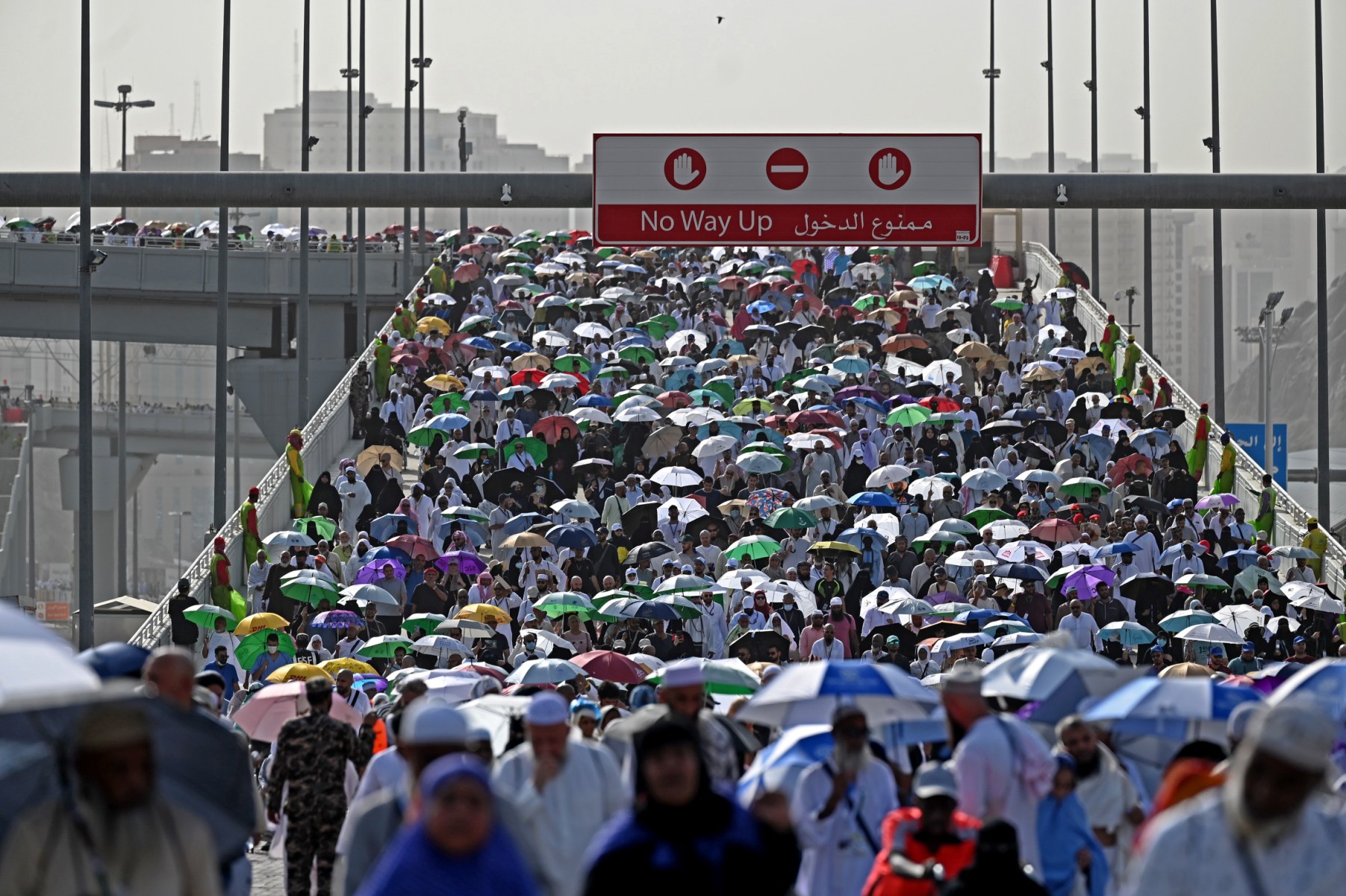More than 2,000 people have suffered heat stress during the Hajj pilgrimage, Saudi officials said Thursday, after temperatures soared to 48 degrees Celsius (118 degrees Fahrenheit) during the annual rites.
Over 1.8 million Muslim worshippers performed the days-long hajj, mostly held outdoors at the height of the Saudi desert summer. Many elderly were among the pilgrims after a Covid-era maximum age limit was scrapped.
Saudi officials said about 1,700 heat stress cases were recorded on Thursday alone – as huge numbers of pilgrims remain at the holy sites, a day after the main rituals finished – added to the 287 reported earlier.
“The number of heat stress cases since the beginning of this day has reached 1,721,” the Saudi health ministry said, urging people to stay out of the sun and drink plenty of water.
- Navy redeploys top officers in major shake-up
- How We Attacked, Killed, Ondo Naval Officer — Suspects
Officials did not provide a death toll but at least 230 people – many from Indonesia – died during the pilgrimage, according to numbers announced by various countries which did not list causes of death.
According to the consul general of Indonesia, the world’s largest Muslim country, at least 209 Indonesians died during the hajj.
“It is inaccurate to say that a lot of Indonesian pilgrims died because of heat strokes,” said Eko Hartono, adding that causes of death were mostly due to heart and respiratory ailments.
But he did acknowledge that some pilgrims had “fainted” during the days-long pilgrimage “because of the heat”.
Iran’s oldest pilgrim this year, aged 114, died of a heart attack, the semi-official Fars news agency said, reporting 10 Iranian deaths.
Eight Algerians and four Moroccans died, officials said, while an Egyptian pro-government media outlet said eight pilgrims from the country had passed away.
Hundreds of people were treated for heart problems, including one 78-year-old Filipino man who had successful open-heart surgery in Mecca, the health ministry said.
The real figure for heat stress – which includes heatstroke, exhaustion, cramps and rashes – is probably far higher, as many sufferers were not admitted to hospitals or clinics.
People struggling in the heat was a common sight, especially after the day-long outdoor prayers at Mount Arafat where overheating phones shut down and shade was hard to find.
The hajj has a history of deadly catastrophes including stampedes and militant attacks, but this year’s main challenge came from the extreme temperatures.
The kingdom dispatched thousands of paramedics and set up field hospitals to help contain the risks. It was the biggest hajj since 2.5 million visitors came in pre-Covid 2019.
The Gulf climate is so harsh that in 2021, the United Nations’ Intergovernmental Panel on Climate Change warned parts of it could become uninhabitable by the end of the century due to global warming.
Maximum summer temperatures of 50 degrees Celsius (122 degrees Fahrenheit) could become an annual occurrence by the end of the century, experts say.

 Join Daily Trust WhatsApp Community For Quick Access To News and Happenings Around You.
Join Daily Trust WhatsApp Community For Quick Access To News and Happenings Around You.

